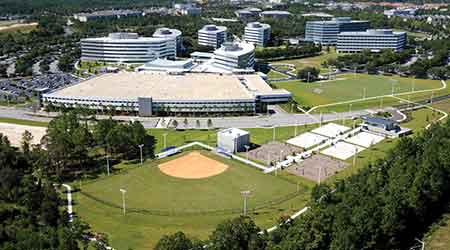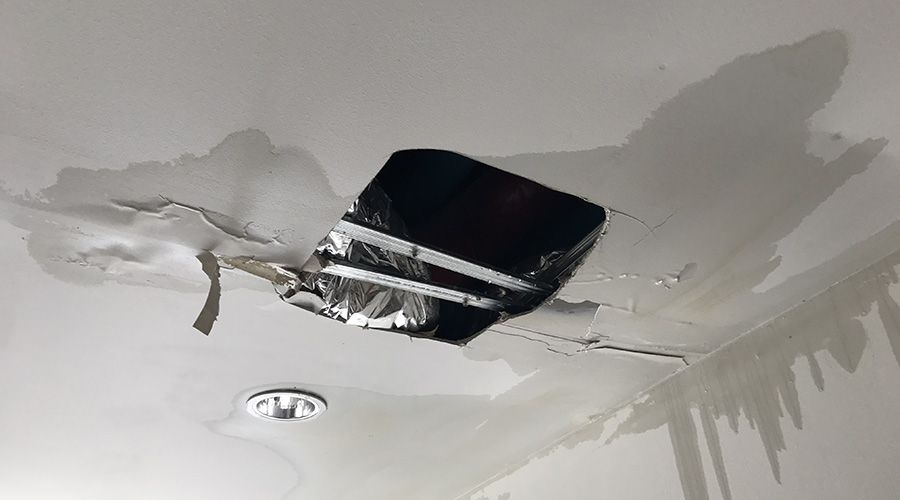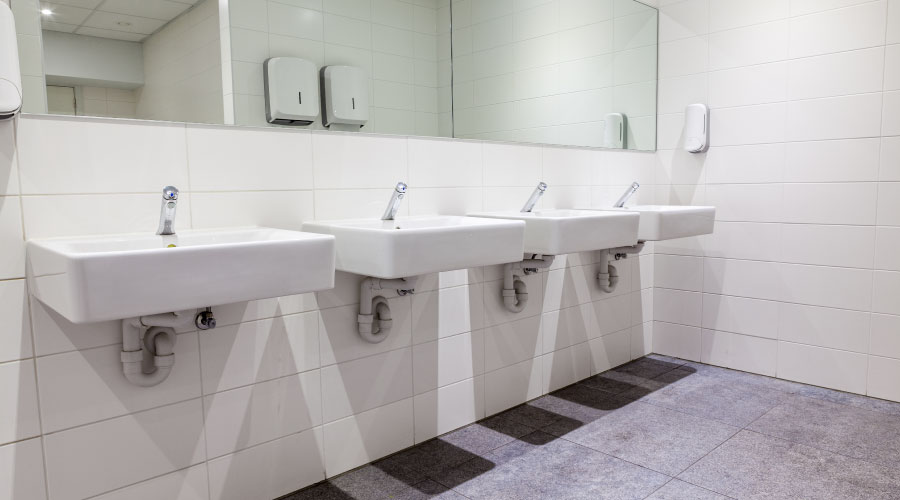 Restroom Renovations throughout facilities on Florida Blue's Jacksonville campus include the installation of about 500 low-flow toilets in more than 100 restrooms.
Restroom Renovations throughout facilities on Florida Blue's Jacksonville campus include the installation of about 500 low-flow toilets in more than 100 restrooms.Curtailing Facility Water Usage Can Aid Sustainability Efforts
An array of sustainability projects related to plumbing, HVAC and irrigation deliver major benefits to Florida Blue's Jacksonville Campus.
Institutional and commercial facilities take many different paths to sustainability. Some opt for a narrow focus that delivers quick results in one specific area, while others broaden the scope a bit by identifying several related targets, then setting goals and delivering benefits in those areas.
Then there is Florida Blue. The Jacksonville-based health insurance provider — Blue Cross and Blue Shield of Florida — put its corporate social responsibility pledge into practice five years ago by setting ambitious goals to reduce water and energy use and increase recycling. The results? “We have reduced our electricity usage by 15 percent, reduced our water usage by 21 percent, and diverted 80 percent of our waste to recycling plants,” says Russell Peacock, Florida Blue’s senior director of facility operations.
The organization’s efforts to curtail water use in its plumbing, HVAC and irrigation systems offers insights into the process of turning sustainability goals into bottom-line benefits.
Nabbing the culprit
The 91-acre corporate campus for Florida Blue contains seven buildings, a conference center and campus recreational facilities with a total of 1.5 million square feet. The campus’s oldest buildings are 20 years old.
“There were no driving factors as far as mandates from the city or state” for sustainability, Peacock says. “For some time, we had been looking for ways to reduce our administrative expenses, and in my area, one of the biggest cost drivers is utilities. That led us to look really hard at our electrical and water use.
“This has been driven from the top, We’ve had corporate level sustainability goals for the last five years or so, and year after year, we’ve strived to reduce our energy and water usage.”
Florida Blue’s efforts to reduce water use throughout its Jacksonville campus started with the likeliest suspect — its largest water-using system.
“Our largest usage of water throughout the year is from the cooling tower usage, so we decided to partner with our vendor that maintains the proper chemicals in the cooling tower water system,” Peacock says. Florida Blue tracks water use by monitoring two water meters on each building. One water meter measures potable water usage — drinking water, restroom services, kitchens, etc. — and the other measures water used by the cooling towers in the HVAC system.
The facilities’ cooling tower systems use water for evaporation and blowdown. Evaporation occurs as part of the cooling process and can only be minimized through design of the cooling towers. Blowdown is a process where operators open a drain valve and add fresh water to reduce the concentration of contaminants and chemicals in the system. The process is necessary to maintain heat-transfer properties in order to prevent scale from building up.
“Unfortunately for Florida Blue, the water in the Jacksonville area is high in minerals,” Peacock says. “Calcium and magnesium are typically the two primary scale formers in a cooling system. By removing these ions with a water softener, the cooling tower is able to run at higher cycles of concentration. This reduces the amount of blowdown and makeup water required.”
So in 2013, Florida Blue and its vendor partner determined that adding water softeners to the cooling tower makeup systems of each building would save approximately 151 million gallons of water annually and have a payback time of less than one year.
“The age of the building or the system did not matter,” Peacock says. “Just adding the water softeners helped us use about 20 percent less water for the cooling towers than we had previously used.”
Peacock says his department played a central role in the project and its success.
“We reached out to our vendor who does our water chemistry and cooling tower systems,” he says. “They gave us three proposals about how we could minimize our water usage, and we selected the water softeners because it meant little or no chemical use and it was very good water savings. They helped us size the water softeners appropriately.
“Facility operations staff initiated the discussions with our vendor, verified the savings projections were accurate, and helped select the proper size and type of water softener. My staff was vital in the installation process, setting up operational procedures and monitoring the equipment for proper operation.”
Related Topics:













